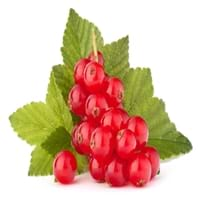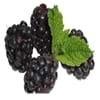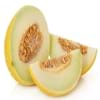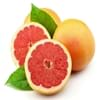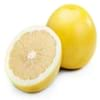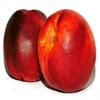Health Benefits
Cancer prevention, Gout treatment, Heart care, Regulation of heart rate, Treatment of rheumatism
Cancer prevention, Cures gastro-intestinal troubles, Heart care, Increase in haemoglobin, Increases metabolic rate
General Benefits
Anti oxidant properties, Controls blood pressure, Cures fever, Digestive aid, Healing of wounds, Helps in weight loss, Strengthens bones
Anti oxidant properties, Anti-inflammatory properties, Healing of wounds, Helps in weight loss, Strengthens bones
Skin Benefits
Brightens and lightens complexion, Reduces wrinkles, Treatment of acne
Anti-aging benefits, Reduces wrinkles, Treatment of dark spots
Hair Benefits
Protects hair
Promotes longer and healthier hair, Protects hair, Shiny hair
Allergy Symptoms
Abnormally rapid heart rate, Anaphylaxis, Breathing difficulty, Hives, Itching, Swallowing difficulties
Abdominal pains, Coughing, Diarrhea, Digestive Problems, Drop in blood pressure, Hives, Itching, Nausea, Tingling sensation in wrist and face, Vomiting, Wheezing
Side Effects
Possibly unsafe during pregnancy
Allergic reaction
Best Time to Eat
Best if taken as a breakfast (or empty stomach), As a snack in the late afternoon, Don't eat after meal, Morning time (before lunch)
As a snack in the late afternoon, Don't consume at night and before bed, Eat the fresh ones, avoid mixing with any other foods, don't eat after meal., Morning time (before lunch), Strictly avoid empty stomach
Vitamin B5 (Pantothenic Acid)
Vitamin C (Ascorbic Acid)
Vitamin K (Phyllochinone)
Calories in Fresh Fruit with Peel
Calories in Fresh Fruit without Peel
Not Available
Not Available
Calories in Frozen Form
Not Available
Not Available
Calories in Dried Form
Not Available
Calories in Canned Form
Not Available
Not Available
Season
Summer
Autumn, Winter
Varieties
Rovada, Stanza, Red Lake, Junifer and Jonkheer van Tets
Hong Kong, Marumi, Meiwa, Centenniel and Nagami
Color
Red
Orange, Red, Yellow
Taste
Sour, Tart
Sweet, Tart
Soil Type
Moist, Well-drained
Clay, Sandy loam, Well-drained
Climatic Conditions
Cold
Cold, Warm
Facts about
- The albino version of red currants known as white currants, are often sold as different fruit.
- Red currant tea is healthy substitute for coffee.
- There are more than 150 varieties of red currants.
- The entire kumquat fruit is edible, except few seeds.
- The taste of kumquat skin is sweet while inner flesh is tart.
- There are some hybrid varieties of kumquats such as mandarinquats, orangequats and limequats.
Top Producer
Russia
China
Other Countries
Belgium, France, Germany, Ireland, Italy, Netherlands, Poland, Portugal, Scotland, Spain, Sweden, United Kingdom
Brazil, Mexico, Spain, United States of America
Top Importer
Germany
United Kingdom
Top Exporter
Russia
China
Botanical Name
Ribes rubrum
Citrus japonica
Synonym
Not Available
Fortunella margarita
Subkingdom
Tracheobionta
Tracheobionta
Division
Magnoliophyta
Magnoliophyta
Class
Magnoliopsida
Magnoliopsida
Order
Saxifragales
Sapindales
Family
Grossulariaceae
Rutaceae
Species
R. rubrum
C. japonica
Generic Group
Saxifrage
Citrus fruit
Difference Between Red Currant and Kumquat
We might think that Red Currant and Kumquat are similar with respect to nutritional value and health benefits. But the nutrient content of both fruits is different. Red Currant and Kumquat Facts such as their taste, shape, color, and size are also distinct. The difference between Red Currant and Kumquat is explained here.
The amount of calories in 100 gm of fresh Red Currant and Kumquat with peel is 56.00 kcal and 71.00 kcal and the amount of calories without peel is Not Available and Not Available respectively. Thus, Red Currant and Kumquat belong to Low Calorie Fruits and Low Calorie Fruits category.These fruits might or might not differ with respect to their scientific classification. The order of Red Currant and Kumquat is Saxifragales and Sapindales respectively. Red Currant belongs to Grossulariaceae family and Kumquat belongs to Rutaceae family. Red Currant belongs to Ribes genus of R. rubrum species and Kumquat belongs to Citrus genus of C. japonica species. Beings plants, both fruits belong to Plantae Kingdom.
